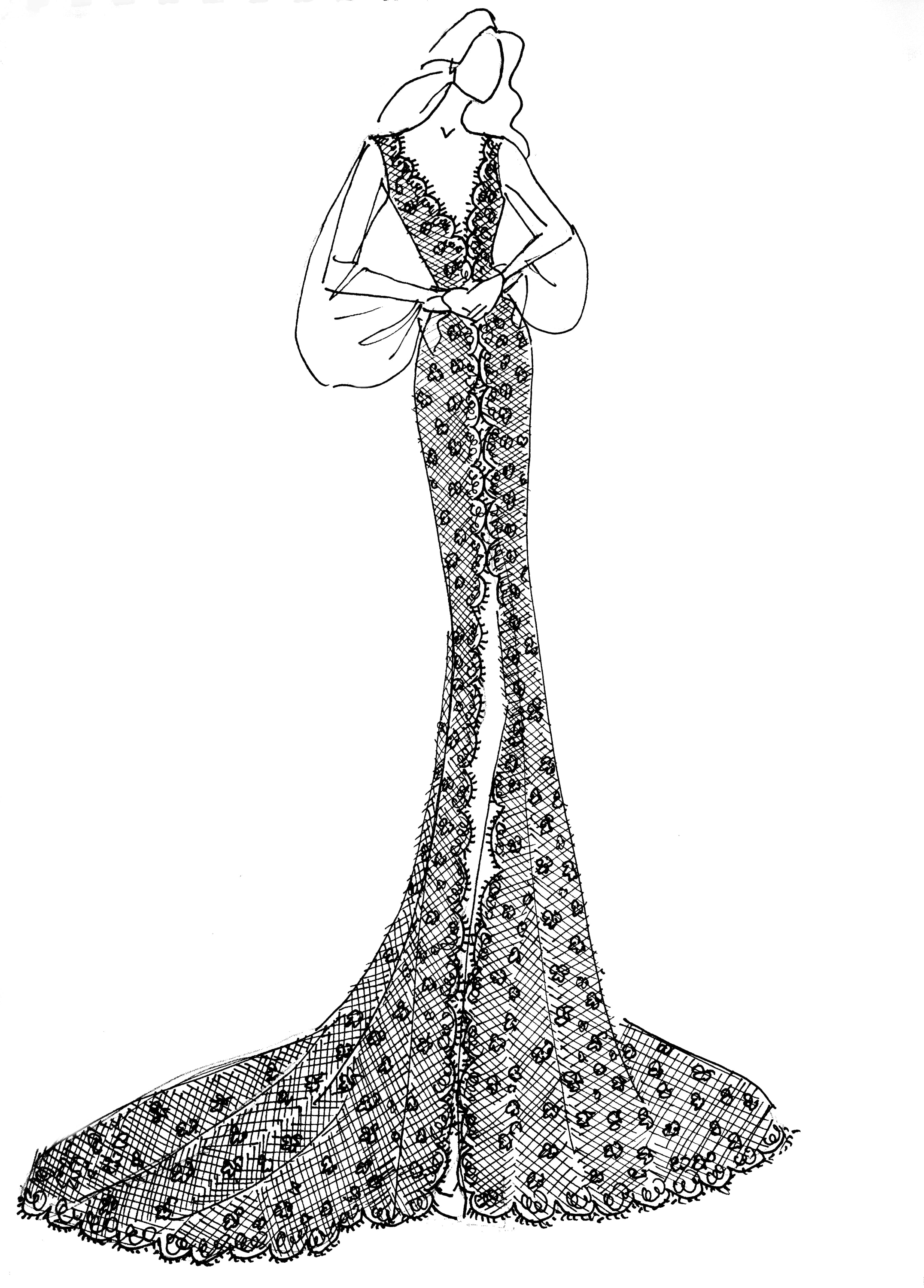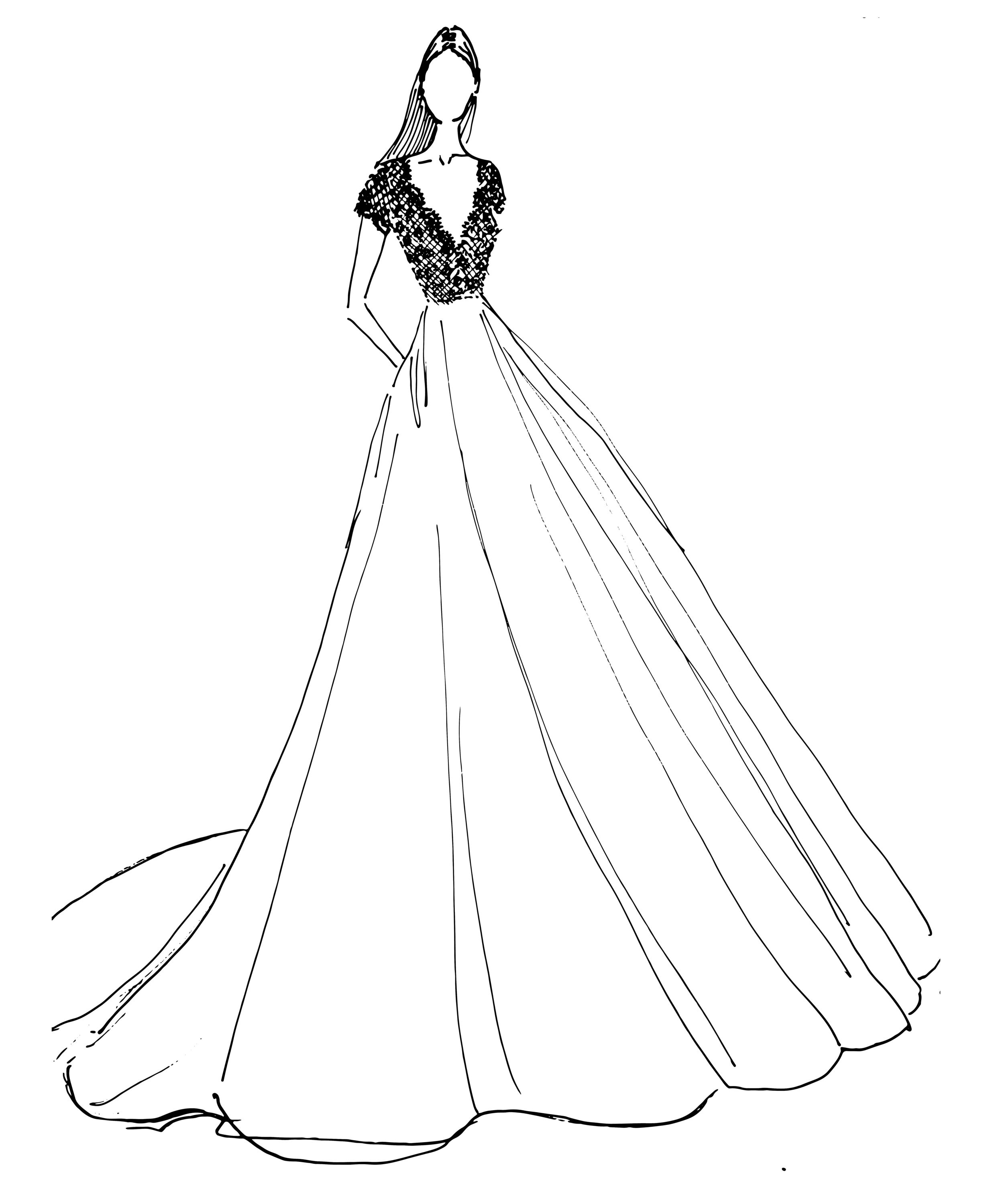06 - 01 - 2022
Gown Spotlight
Reflecting a Woman's Essence in Design
In his recent bridal collection, "Maja," Antonio features more lace and romance than in any previous season. Here, we dive into the fantasies that play out in his head as he imagines the type of woman each gown embodies.
Watch the video, or read on to get a closer look at his sketches, musings, and inspirations.

"She's the type of woman that bull fighters in 19th century Madrid would dedicate their kills to!"
Who is La Maja?
The Blair gown, with its deep-v neckline and center slit, most directly embodies this character. Antonio describes the design as "very... Spanish, in the sense that the Maja is an iconic Spanish figure, and lace is an iconic Spanish element."
La Maja is a woman depicted in an 1800s painting by Francisco Goya, and on a perfume/soap box that Antonio views as synonymous with Latin culture. In revisiting why her image stuck with him this season, he explained, "every Cuban household had this soap in the mother's bathroom."
While he typically doesn't look to his upbringing for inspiration, he expressed that Spanish imagery likely made it into this collection because he couldn't visit home during the pandemic.
Through Antonio's eyes, La Maja is a feminine, but cheeky, powerful woman, with a certain grace that commands the room. This is what inspired Blair's design-- captivating femininity.
"There's a certain exuberance that comes with Summer..."
In detailing the Summer gown, Antonio explains, "I think of sky, I think of water. I think of the elements, and that's why the gown is so airy. And with that little amount of glitter every now and then, I almost think of sunlight when it dances upon the sea. You just see little twinkles of light."

Blair, La Maja
"I've never done so much lace in my collection, I've always thought of lace as being a little bit too quaint for me. But, in this collection, I found it romantic and powerful. There's a certain doll-like element to that, and that's what I wanted to see in her."

Summer, the Siren
"It's light as a bubble! The freshness is what inspired the strapless silhouette, and there's just something to be said about beautiful shoulders."
Who is La Habanera?
Carmen is the name of a 19th century opera set in Seville, featuring the famous song "Habanera." Antonio associates the Carmen gown with the image of La Habanera, which he describes as "the most beautiful, most graceful dancer. And with this," he explains, "comes the language of the fan." His own purple fan, a gift from his grandma, is shown in the video above.
"The fan was a very important instrument in that time for this kind of woman. Graceful women, who were always clever, were able to communicate without anyone knowing what they were saying. [...] If you place it over your face it means I cannot see you, when it's over your mouth it means I cannot speak to you, and when it's over your heart, it means I love you."

Carmen, La Habanera
"In my mind, she is a little demure, but she's very feminine, so the neckline is low which is a little provocative. Then, the sleeves evoke a kind of innocence, so it's a combination of those elements that create the spirit of the gown."

Alyson, La Infanta
Antonio describes Alyson's fabric as an "artistic license on lace," since while lace is made of thread, this dress uses thread embroidered tulle in an abstract leaf pattern.








